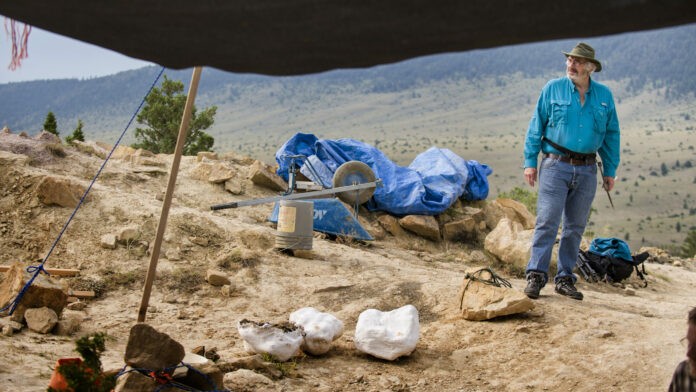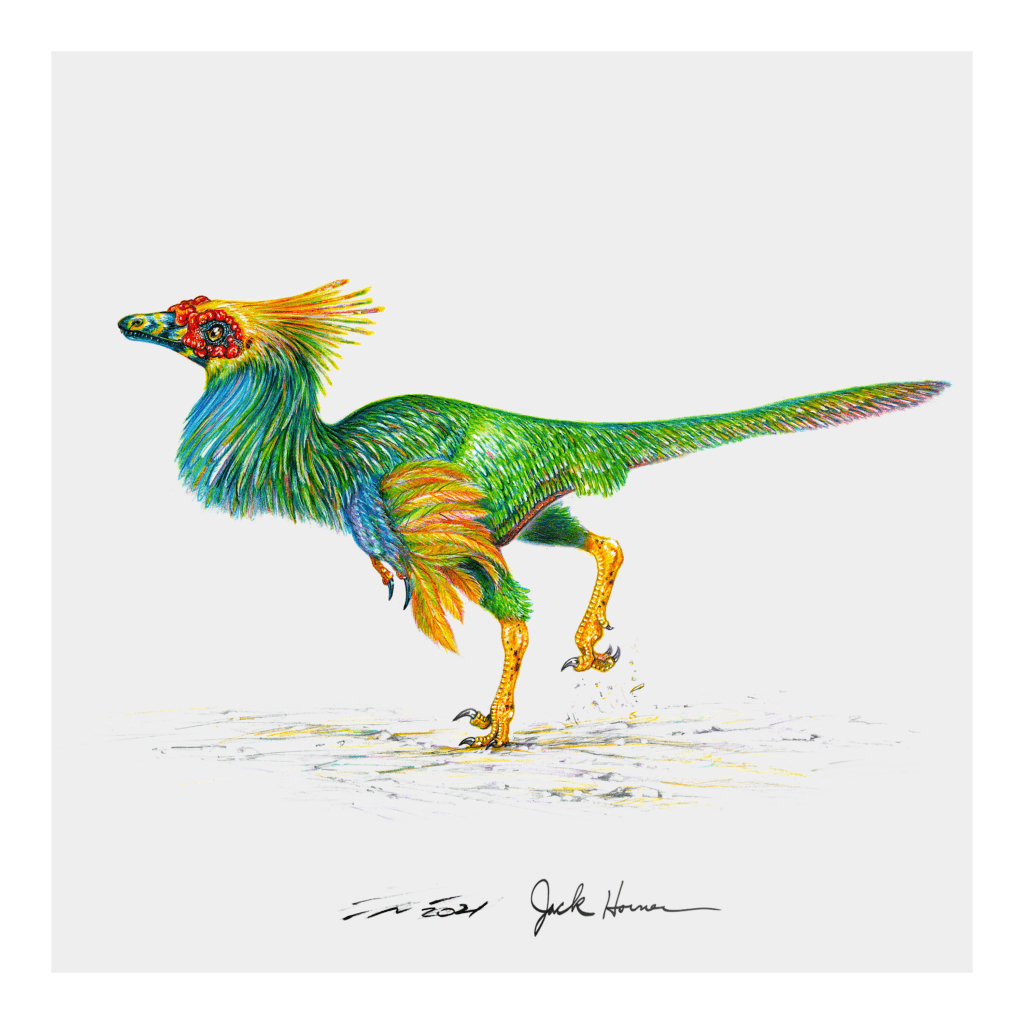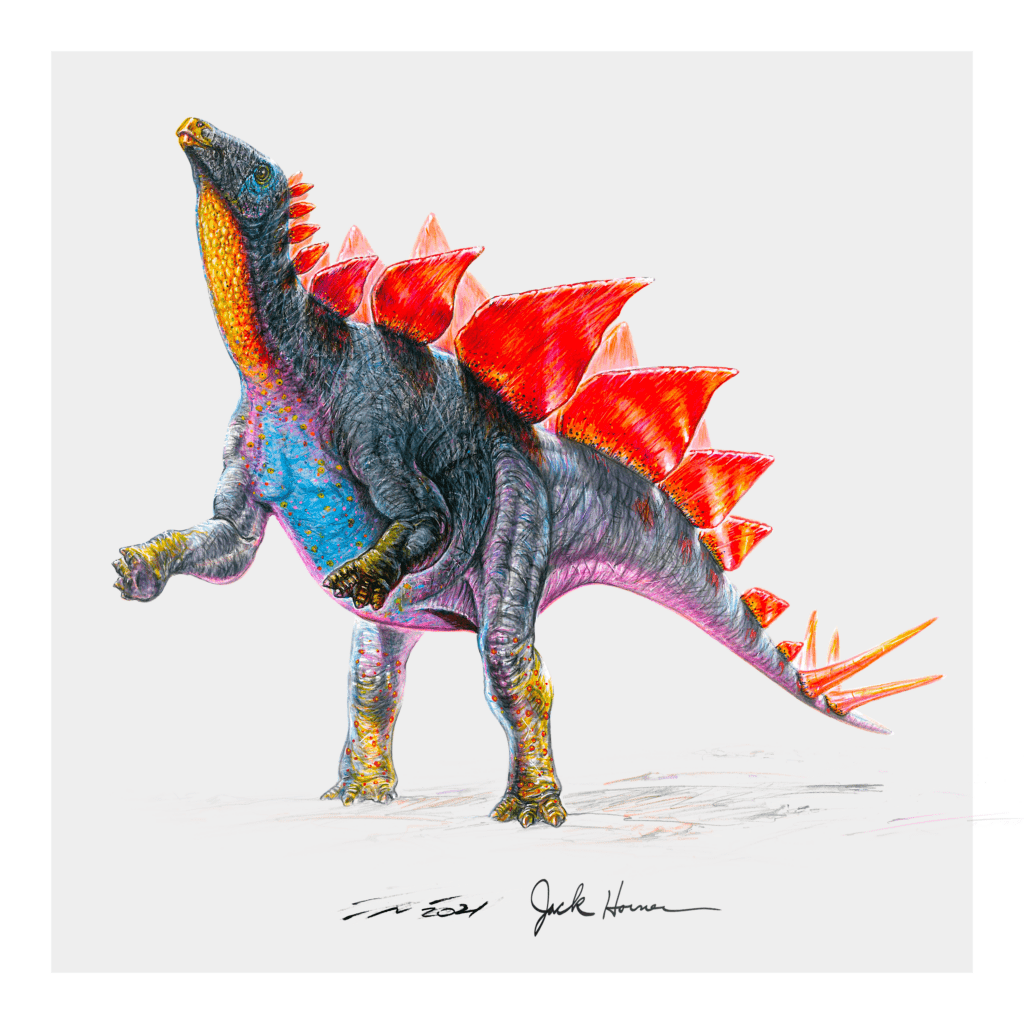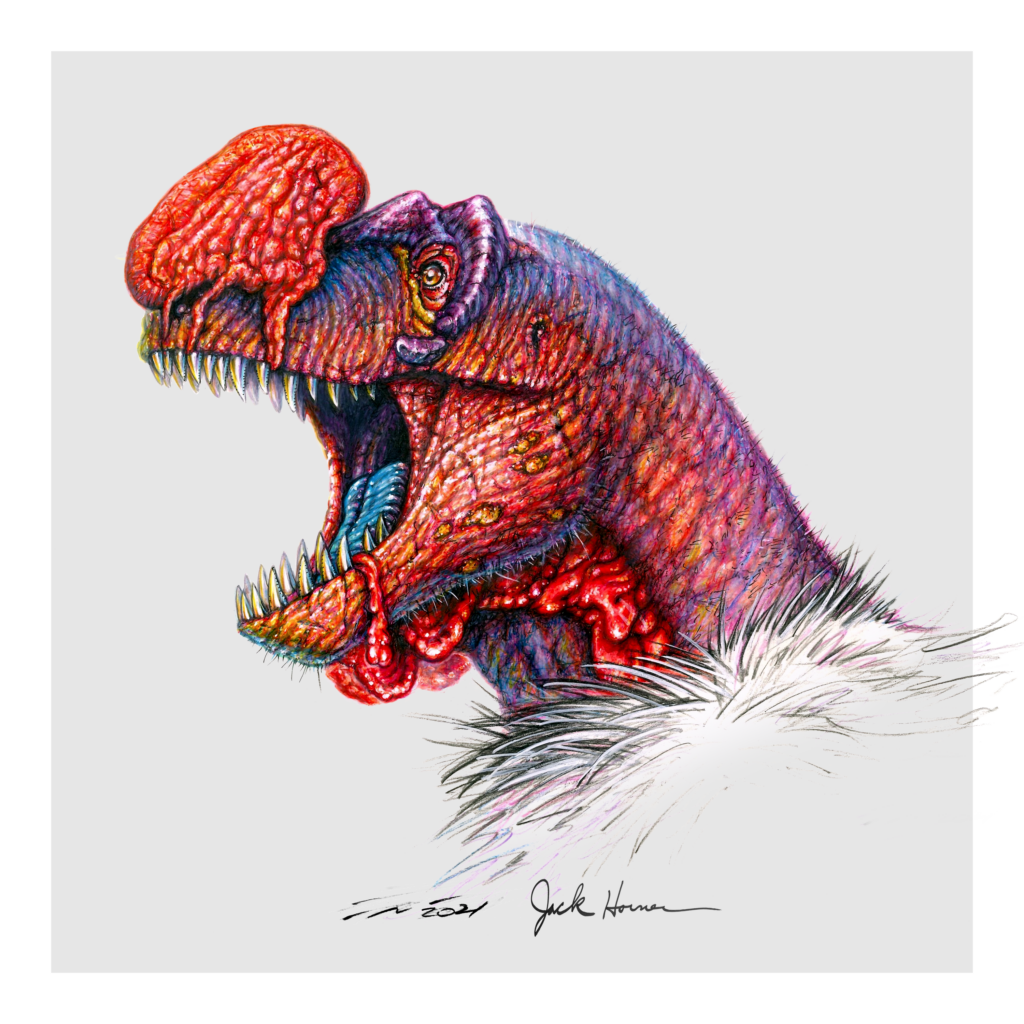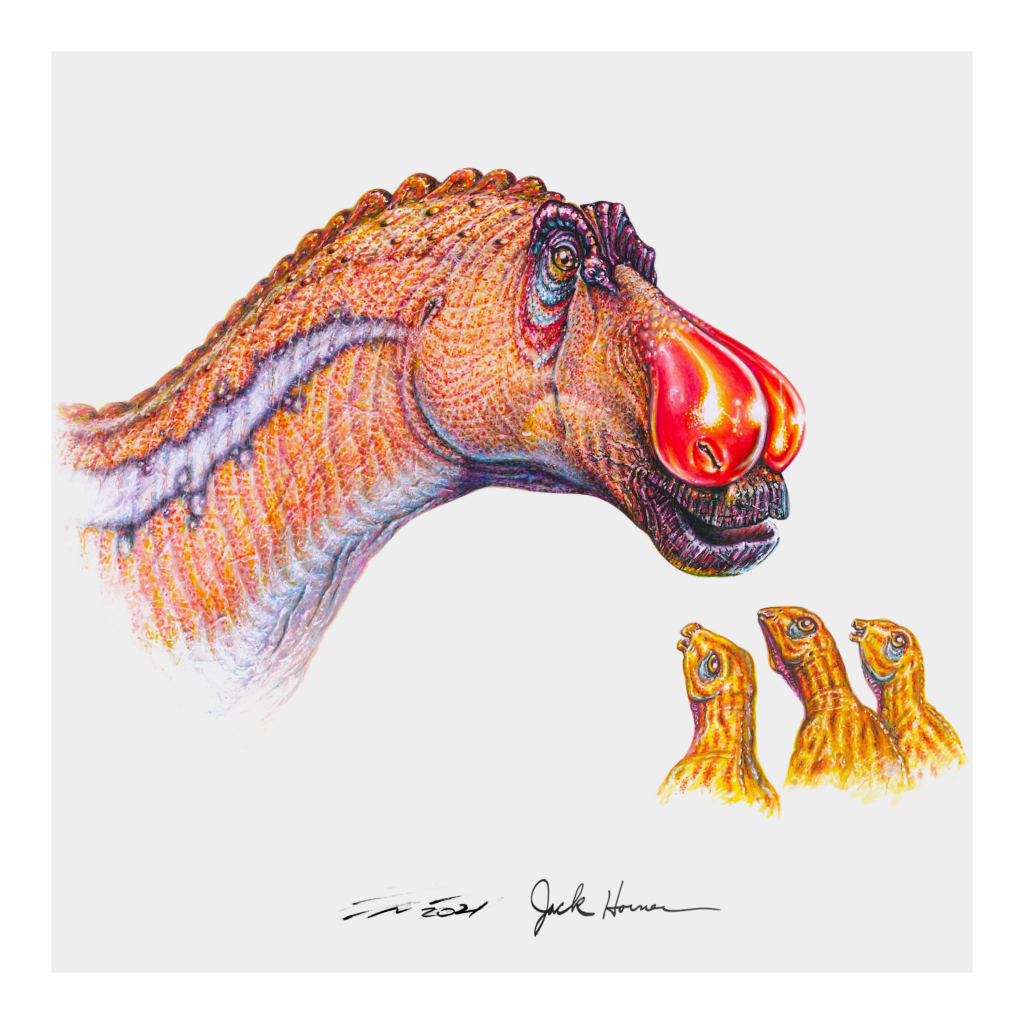On October 21, Horner Science Group has launched Jack Horner’s Dinosaurs – The Origin Collection. This new collection of dinosaur artworks challenges the Hollywood portrayal of dull green and brown creatures. Instead, they showcase the more bird-like features and behaviors that Jack Horner believes they had — from eye-catching colors, and bird-like sounds, to feathers and accoutrements that they used in flamboyant displays to attract mates or deter predators.
These new artworks, which are being sold as non-fungible tokens (NFTs), are based on a collaboration between Horner and Italian Paleo artist Fabio Pastori. This blending of science and art has brought to life Jack’s theories of what dinosaurs really looked like in a range of images that form this Origin Collection. A proportion of the proceeds from the sale will first fund the Horner Science Group Paleontology Research and Education Foundation. Sales will also support the work of Horner Science Group, a mission-driven organization whose vision is to inspire interest, understanding, and passion for dinosaurs, paleontology, and all sciences through personal discovery.
Image credit: Jack Horner / Fabio Pastori
10 Dinosaurs, 10 Series and 100 NFTs will feature in this first drop from Jack Horner’s Dinosaurs – The Origin Collection. Some of the major shifts they demonstrate are highlighted here:
- Tyrannosaurus rex (head) – this T.rex intentionally looks like an opportunistic feeder rather than simply a predator as often thought. The T.rex had many features for visual display, such as wattles and a soft tissue comb on its nose like a condor
- Tyrannosaurus rex (full body) – this full body representation also challenges how T.rex is often seen in the media and whilst not emphasizing it as an opportunist it is another representation of theories that T.rex was likely a colorful and birdlike creature
- Einiosaurus – Horner’s theory is that the Einiosaurus’ face was covered in keratin like the casque or beak of a bird
- Troodon – male Troodons may have danced like birds to ‘display’ to their potential mates and just to show off to each other
- Pachycephalosaurus – most renditions of Pachycephalosaurus show a round or domed head, but now there is evidence suggesting there is something vertical located on top, yet we still have no idea exactly what it could be – this visualization is a first hypothesis
- Stegosaurus – Stegosaurus did not use its tail and its plates for defense as commonly thought, but used them only for ‘display’
- Triceratops – Horner thinks that the Triceratops skull was covered in keratin, unlike most images which show only the horns and beak covered in this hard substance
- Ankylosaurus – Most people consider dinosaur horns, shields, plates, and spikes were used for defense, but Jack and others think these accoutrements were used for display purposes
- Allosaurus – like all meat-eating dinosaurs, it would have had feathers and those feathers were probably very colorful
- Maiasaura – we think that Maiasaura had an inflatable nasal pouch that they could use to make honking sounds
Horner is technical advisor on all Jurassic Park and World films, and his work has been viewed on television, TED Talks and a variety of other media by millions of people around the world. Regarding the portrayal of dinosaurs in film, television, books and merchandise, the science has moved on but not their portrayal in popular culture and with their vivid colors and striking adornments the Origin Collection gives a window into the past and brings to life Horner’s long held theories.
Horner said: “Since I found my first dinosaur skeleton in Montana when I was 13 years old and until I initiated the Hell Creek Project which was the largest field expedition for dinosaurs in the world, I have never stopped thinking or challenging our perceptions of dinosaurs — from how they behaved to what they might have looked like.
“The science has moved on since Jurassic Park was made in 1993 but the way we see dinosaurs portrayed on screen or in print really hasn’t caught up! That is why I was so happy to work with Fabio Pastori who has really helped me to take what was in my mind and create amazing artistic visualizations out of those thoughts based on my many years of research. I can’t over emphasize what a meeting of minds it was, and just how he has captured the way I personally think about how dinosaurs may have looked astonishes me, as it will the public. This is nothing like the dinosaurs of Jurassic Park/World fame — my dinosaurs are flamboyant and colorful just like birds!
“I was so amazed by our results that Horner Science Group has decided to launch these dinosaurs as 10 digital works of art as NFTs, including animated special effects, as the Jack Horner’s Dinosaurs – The Origin Collection in order to fund paleontology research and education through our Foundation. Our ambition is that they will not only be collected as works of digital art, but will also really shift public opinion on what real dinosaurs looked like. So, in addition, Horner Science Group will also donate 10 animated NFTs to 10 museums, science or research centers across the globe. We want these NFT artworks to spark up debate and inspire interest, understanding and real passion for dinosaurs.”
Paleo artist Pastori said: “As someone who has been working in paleo art for many decades, it was a great honor to collaborate with Jack on creating these works of art. The way he thinks and his decades of scientific research made this a stimulating team effort for both of us. Although I am an artist, I also see myself as a science communicator and that is why working with Jack has been such a wonderful experience. A scientist and an artist are both unique, and maybe come from opposite ends of the spectrum but it is those different skills that have helped create a new vision of dinosaurs and this powerful NFT collection.”
In order to make the NFTs available to a broad range of audiences Horner Science Group has developed a series of different drops at a range of prices and an auction:
The Legendary Series, which brings to life Horner’s theories on how dinosaurs moved and sounded, will see a single animated edition of each of the 10 dinosaur artworks released for auction over 30 days. This NFT features unlockable content, which allows the buyer the opportunity to schedule a 45-minute interview with Horner over the next year. This series also serves as a ‘Golden Dino Ticket’ for special future 3D release perks upon the release of additional collections.
The Variation Series features seven unique variations on each of the 10 original dinosaur artworks, including a sketch series and a variety of backgrounds and other variations. (70 in total).
The White Series is a release of 100 limited editions of each of the 10 dinosaur artworks as a framed static image with a simple background. This series will be available at an extremely low price, to enable dinosaur lovers everywhere to own a piece of dinosaur history.
As well as being open to the public and collectors to buy, the Museum Series of 10 animated NFTs will be donated by the Horner Science Group to 10 museums, science or research centers across the globe to use in advancing their research, education and fundraising efforts. The Horner Science Group has issued an open call, asking institutions across the world to come forward if they are interested in receiving an airdrop of one of these rare digital artworks.


